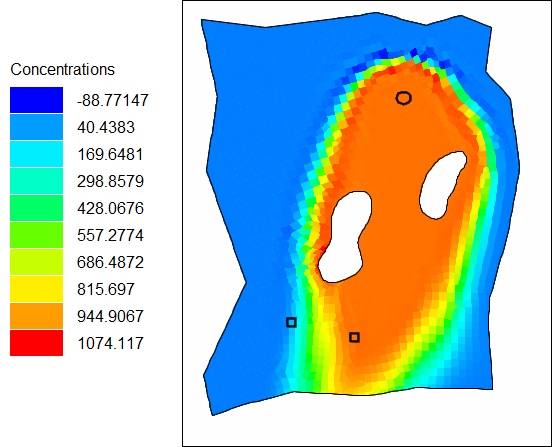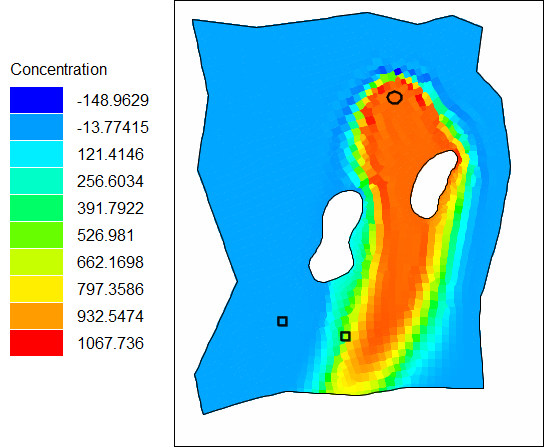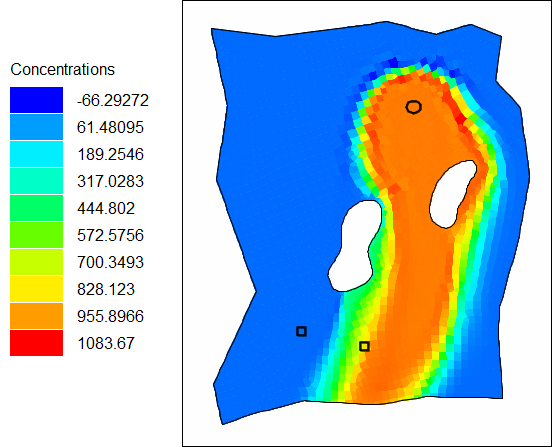RmaSutra: Next Steps |
RmaSutra: Next Steps |
As with the MODFLOW versions of this model, the next steps might be to further investigate the risk posed by the contaminants in the flow from the disposal pond to the water supply wells. Solute transport was simulated in this version of the model. It is a simple matter to import the model results from the calibrated model and compare them with the uncalibrated model and true models. In the uncalibrated model, the solute plum is much wider than in the calibrated or true models. In the calibrated and true model, low hydraulic conductivities on the east and west sides directed more flow toward the center of the model resulting in a narrower plume.

Diagram of simulated concentrations in the final time step of the uncalibrated model.

Diagram of simulated concentrations in the final time step of the calibrated model.

Diagram of simulated concentrations in the final time step of the true model.
We looked at how well the model matched the true hydraulic conductivity and pumping rates. That isn’t something we could do in a model of a real groundwater system. We also used a very low value of PHIMLIM, the target measurement objective function. To avoid overfitting the model, our next step would be to run PEST again but with PHIMLIM and PHIMACCEPT set to larger values. Anderson and other (2015, p 418) suggest a value 10% higher than in the best fit value recorded in the PEST run record. PHIMACCEPT is typically 5-10% larger than PHIMLIM.
PEST comes with a variety of utility programs for a variety of purposes such as statistical postprocessing utilities used to gain a better understanding of the information content of the calibration dataset, and of the estimability of individual parameters. Other utility programs are used for exploring the uncertainty of predictions made by the model.
ModelMuse was not designed to support PEST++ (White and others, 2020) directly. Nevertheless, PEST++ was designed to be backwards compatible with PEST so it should be possible to use PEST control files generated with ModelMuse with PEST++. If the user wishes to use capabilities of PEST++ that are not included in PEST, that can be done by appropriately altering the PEST control file.